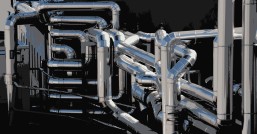In the ever-evolving landscape of welding technology, the role of internal welders has become increasingly critical. With the advent of advanced automation techniques, the demands on these professionals have escalated, necessitating a robust training curriculum. This article delves into the various topics that should be included in the training content for internal welders specializing in automatic welding.
I. Introduction to Automatic Welding
The training must begin with an overview of automatic welding, highlighting its advantages over manual welding methods. This includes discussions on improved accuracy, enhanced productivity, and reduced operator fatigue. The basic principles of automated welding machines and their operation should also be introduced.

II. Safety Protocols and Hazard Awareness
A comprehensive safety training module is essential, covering personal protective equipment (PPE), workplace hazards, and emergency procedures. This section should emphasize the importance of adhering to safety regulations and adopting a culture of safety in the workplace.
III. Understanding Internal Welding Applications
Internal welding techniques are typically employed in the manufacturing of pipelines, tanks, and other industrial equipment. This section of the training will explore the specific applications of internal welding, the materials commonly used, and the unique challenges involved.
IV. Fundamentals of Internal Welding Machinery
The trainees will need to gain a thorough understanding of the different types of internal welding machines, their components, and their operation. This includes familiarity with robotic welding systems, tracking mechanisms, and welding torches.
V. Welding Process Selection and Parameters
This section will cover the various welding processes suitable for internal welding applications, such as MIG, TIG, and stick welding. The trainees will learn how to select the appropriate process based on the material, joint design, and other considerations. Additionally, they will be instructed on adjusting welding parameters like voltage, amperage, and welding speed to achieve optimal results.
VI. Quality Control and Inspection Techniques
The training should include a robust quality control module, focusing on pre-weld inspections, in-process monitoring, and post-weld evaluation. This section will cover visual inspection techniques, non-destructive testing methods (NDT), and weld acceptance criteria.

VII. Troubleshooting and Maintenance of Welding Equipment
A critical aspect of training for internal welders is troubleshooting welding equipment. The trainees will be taught to identify common issues with internal welding machines and how to resolve them efficiently. Additionally, they will learn the basics of equipment maintenance, including lubrication, cleaning, and calibration.
VIII. Case Studies and Practical Exercises
To reinforce the theoretical knowledge gained, case studies and practical exercises should be incorporated into the training. These activities will allow trainees to apply their knowledge to real-world scenarios, enhancing their skillset and confidence.
IX. Continuing Education and Certification
The training should culminate with a discussion on the importance of continuing education and professional certification. This section will explore avenues for further training, industry-recognized certifications, and the benefits of lifelong learning.
X. Conclusion
In conclusion, a comprehensive training program for internal welders specializing in automatic welding must cover a wide range of topics, from the fundamentals of automatic welding to advanced troubleshooting and maintenance techniques. By incorporating these essential elements into the curriculum, the trainees will be well-prepared to excel in their roles as internal welders in today's demanding industrial environment.










发表评论